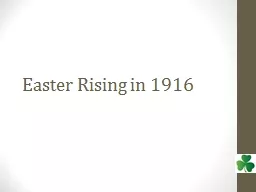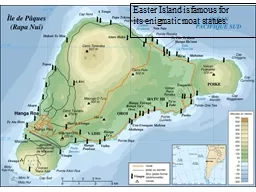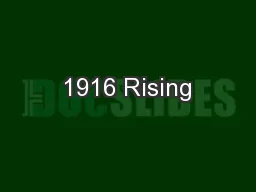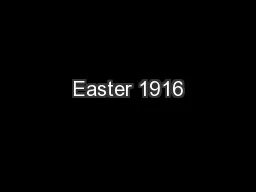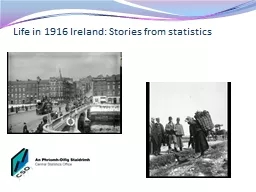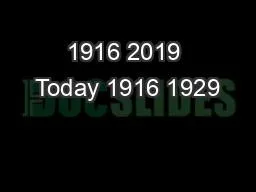PPT-Easter Rising in 1916
Author : danika-pritchard | Published Date : 2017-04-27
Germination of Rising After 1902 even in peace time the Ireland police were more military and the military more policelike than in Britain Miliary parties were
Presentation Embed Code
Download Presentation
Download Presentation The PPT/PDF document "Easter Rising in 1916" is the property of its rightful owner. Permission is granted to download and print the materials on this website for personal, non-commercial use only, and to display it on your personal computer provided you do not modify the materials and that you retain all copyright notices contained in the materials. By downloading content from our website, you accept the terms of this agreement.
Easter Rising in 1916: Transcript
Download Rules Of Document
"Easter Rising in 1916"The content belongs to its owner. You may download and print it for personal use, without modification, and keep all copyright notices. By downloading, you agree to these terms.
Related Documents

